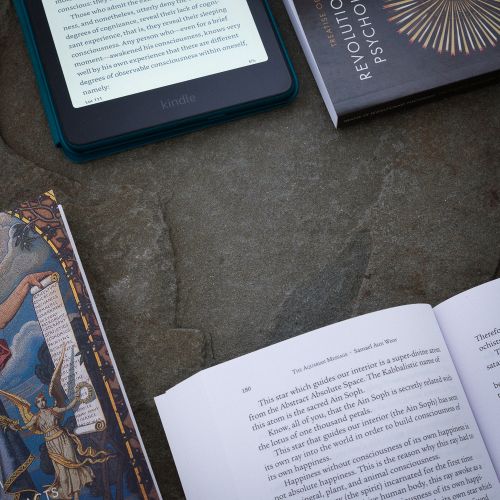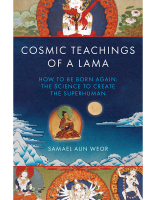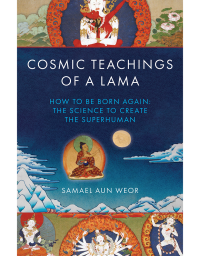Excerpted from The Flying Saucer Conspiracy by Major Donald E. Keyhoe, 1955
On the night of July 29, 1953, John J. O’Neill, science editor of the Herald Tribune, settled himself at his telescope for an evening’s observation of the moon. It was 6:30 U.T., and the moon, on its northerly course, was approaching the equator when O’Neill made an amazing discovery.
Stretching above the Mare Crisium crater was a gigantic bridge!
For a moment O’Neill refused to believe his senses. It might be an optical illusion. With utmost care he rechecked his telescope. He was using a 90X eyepiece. The “seeing”—an Astronomer’s term for visual conditions—was excellent.
He took another look.
The bridge was still there. Stretching in a straight line from pediment to pediment, it was more than 12 miles long.
The thing seemed impossible. In all the years he had watched the moon, there had been no bridge — nothing at all — above the Mare Crisium.
But there it was.
Fascinated, O’Neill watched the mysterious bridge for an hour and a half. Twice he changed eyepieces, to a 125X and 250X. Both times, under the higher magnification, the huge structure appeared sharply in outline, an unbelievable engineering marvel apparently erected in weeks, perhaps days.
Knowing the furor it would cause among astronomers, a man with no less courage would have kept silent. As it was, not even O’Neill dared to tell the whole story. In his report to the Association of Lunar and Planetary Observers, he called his discovery a “gigantic natural bridge.” But the sudden appearance of such a structure by an act of nature was absolutely impossible, as many privately admitted.
As O’Neill expected, he was quickly attacked by some astronomers. But most critics were abruptly silenced. For in August, 1953, one month after O’Neill’s discovery, the existence of the bridge was fully confirmed by the great British astronomer, Dr. H.P. Wilkins. The following month it was also reported by another English lunar authority, Patrick Moore, a leading member of the British Astronomical Association.
The courage shown by O’Neill, Wilkins, and Moore soon led several astronomers to speak out on other moon mysteries-especially the strange lights so frequently seen in some craters.
On September 16, 1953, a peculiar, bright flash was seen on the moon by Rudolph M. Lippert, a member of the Lunar Section of the British Astronomical Association. Through his eight-inch Cassegrain reflector,with 90X power, the mysterious light glowed a yellowish orange, as bright as a first-magnitude star. Like the previous reports of strange lights, this was quickly explained away by more skeptical astronomers, who claimed it was a meteor hitting the moon.
But there was no way to brush off the Mare Crisium bridge discovery.
In public Dr. Wilkins, like O’Neill, had called it a strange “natural bridge.” But his private comments had astonished members of the Royal Astronomical Association and the British Interplanetary Society.
It was not long before word of his comments reached the Pentagon. There the silence group learned with alarm that Wilkins was planning to make public his opinion of the bridge.
There was no way for the Pentagon censors to muzzle a British subject. All they could do was to pray the censors in London would somehow keep him from talking.
As I puzzled over the question of a moon base, I vaguely remembered some of the earlier recorded observations of the moon.
Within a short time, after I had talked with astronomers and searched astronomy records, a startling picture began to emerge.
For almost 200 years astronomers had watched mysterious activities on the moon.
Early in the nineteenth century Sir John Herschel, one of England’s great astronomers, reported seeing strange, bright lights when the moon was darkened by an eclipse. Some of the lights, he said, seemed to be moving “above the moon.”
Later, startling geometrical patterns resembling city streets were seen by the astronomer Gruithuisen.
In 1869 a sudden eruption of mystery lights, in regular patterns, caused a three-year investigation by the Royal Astronomical Society of Great Britain. Most of these puzzling lights were seen in the Mare Crisium area, where the gigantic bridge was later discovered. Watched by dozens of astronomers, the lights appeared in circular groups, triangular formations, and straight lines, their intensity varying as if by intelligent control.
Though the Royal Astronomical Society would not admit it publicly, some of its members believed this was an attempt by an unknown race on the moon to signal the earth. Until 1871 careful records were made every night, in the hope of deciphering the messages. Then, after nearly 2000 observations, the strange lights ceased to appear. If they were signals, their meaning was still a riddle.
Beside the puzzling lights, several mysterious dark objects had been sighted moving over the moon’s surface. In 1912 Dr. F.B. Harris picked up a huge black object with his telescope. Estimated to be at least 50 miles across, it was clearly visible as it traversed the shinning face of the moon.
Since 1915 straight and curving walls had suddenly appeared in several craters, among them Archimedes and Aristarchus.
On March 30, 1950, Dr. H.P. Wilkins, using a 15 1/4-inch reflector, picked up a weird glow in the Aristarchus-Herodotus region. Oval-shaped and strangely brilliant, it apparently came from some type of glowing machine hovering near the crater floor.
Three months later an almost identical light was sighted at the same spot by an experienced American astronomer, James C. Bartlett, Jr.
Most recent of all were the mystifying white “domes”-strange round formations, which appeared abruptly in many of the moon’s craters.
All the evidence suggested not only the existence of a moon base, but that operations by an intelligent race had already begun. If so, who could the creatures be? Were they from other planets or did they originate on the moon?







